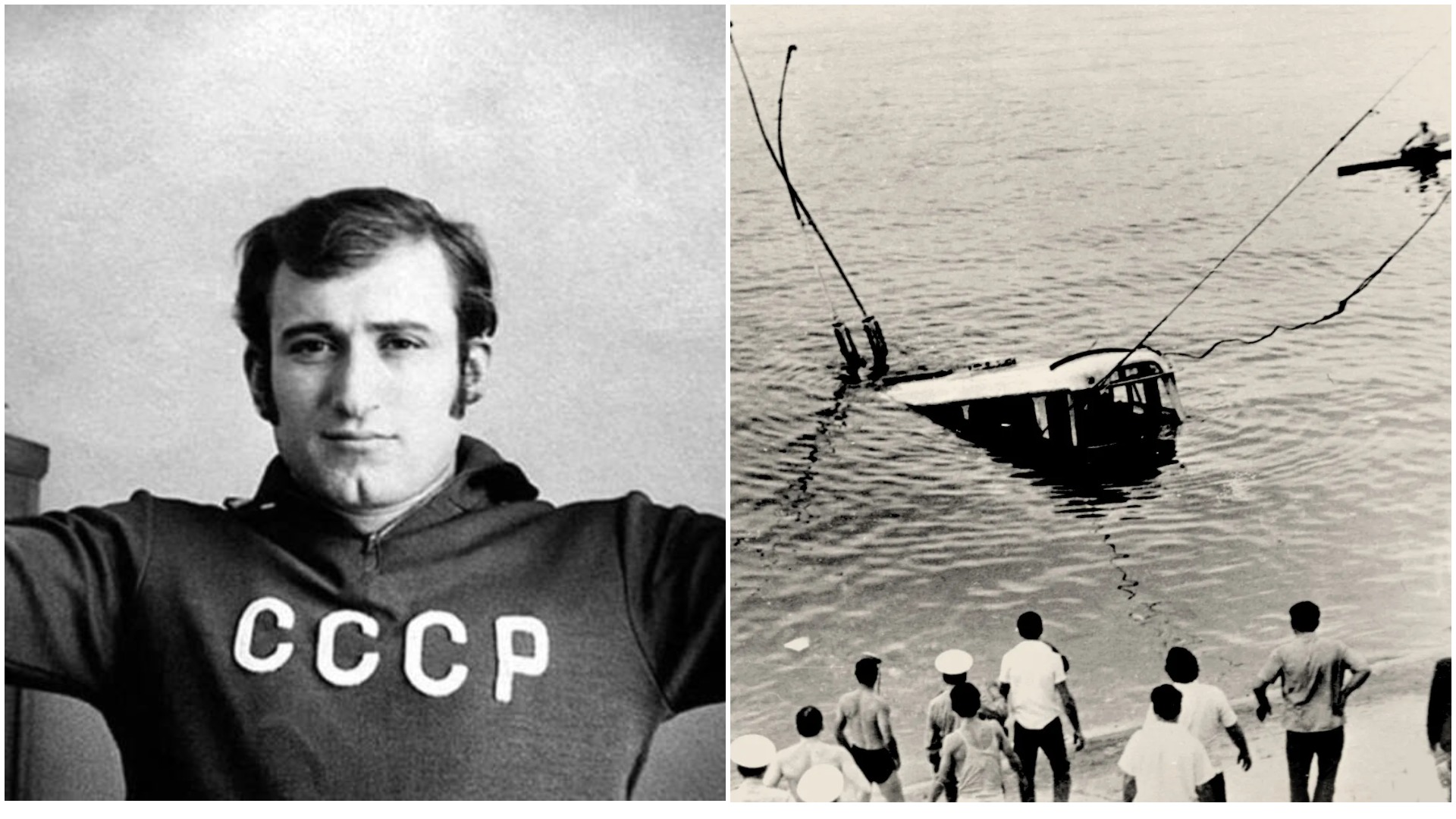Smoke‑cold air. A metal monster plunging into the black water. Glass shattering, muffled screams, hands clawing at the murky surface. Eighty feet from shore, in near‑total darkness under fetid water, one man hears it all…

On September 16, 1976, 23‑year‑old finswimming champion Shavarsh Karapetyan was jogging with his brother Kamo along the edge of Yerevan Lake after a grueling 20 km run when a trolleybus veered off a dam wall and crashed into the reservoir. The bus carried 92 terrified passengers, and within seconds it lay submerged some 25 meters offshore at about 10 meters depth. The sound of metal tearing and concrete splintering froze the air.

Without hesitation, Karapetyan dove into the ice‑cold, silt‑thick, sewage‑tainted water. With visibility near zero, he kicked open the rear window with a karate‑style thrust of his leg—shattering glass slashed his flesh, but created a six‑foot breach.

Thirty seconds at a time, he plunged beneath the murk, feeling blind in the current. Each dive, he groped for human forms trapped inside that iron shell. When he found them, he hoisted them up—just as he had trained, five breaths, dive, surface, repeat. Often he returned with trembling hands holding nothing but a twisted cushion—so fuzzy and faint was his grasp on reality, and those mistakes haunted him later.
He repeated the dive up to 40 times—in other accounts about 20 times—before fainting. Across his efforts, he pulled 37 people free, while 9 others escaped on their own through the smashed window. But medical teams at the shore could save only 20 survivors. The remaining 46 perished, including the driver.
The rescue unfolded over approximately 20 minutes, a chaotic ballet of sponge‑dark water, broken glass, and human desperation.
Karapetyan’s body paid a cruel price. He battled pneumonia, sepsis, and debilitating lung damage. Unconscious for 45 days, his sporting career was effectively over—but his conscience bore even deeper scars.

Shockingly, his heroism remained secret for years. Photographs and reports lay in district archives—only in 1982 did Komsomolskaya Pravda publish “The Underwater Battle of the Champion,” exposing the rescuer’s identity. He received the Medal "For the Salvation of the Drowning" and the Order of the Badge of Honor, and letters flooded in—tens of thousands.

But Karapetyan’s story didn’t end there. In 1985, when a fire ripped through the Karen Demirchyan (Sports and Concert) Complex, he raced into the flames to help evacuate people—only to suffer severe burns and face another long hospital battle.

Years later, a Redditor movingly summarized:
“Pulled 46 people from a confined space 10 meters underwater in 20 minutes while bleeding, becoming hypothermic… That guy deserves more medals.”
This was no cinematic flair—it was flesh‑and‑bone courage.
A man who sprinted into death’s doorway, hammering at steel in the hope of pulling strangers back from oblivion.
Conclusion
In the end, the man who once carved world records underwater carved a legacy even deeper: a testament to how one person’s refusal to turn away can change countless lives. It’s both heroic and heartbreakingly real—because real heroes aren’t drawn; they act. And some of them breathe, bleed, and live in us to this day.
Sources
-
Wikipedia: details of the incident, number of dives, victims, injuries, career impact, honors Wikipedia
-
Aurora Prize site: first‑hand details of dives, 20 rescued, nightmares, asteroid named after him Aurora Prize
-
Grantland “The Plunge” feature: vivid narrative of the rescue The Journal
-
BrightVibes, MentalFloss, VocalMedia: supporting retellings and figures BrightVibes
-
Reddit eyewitness quotes to highlight public reaction Reddit

